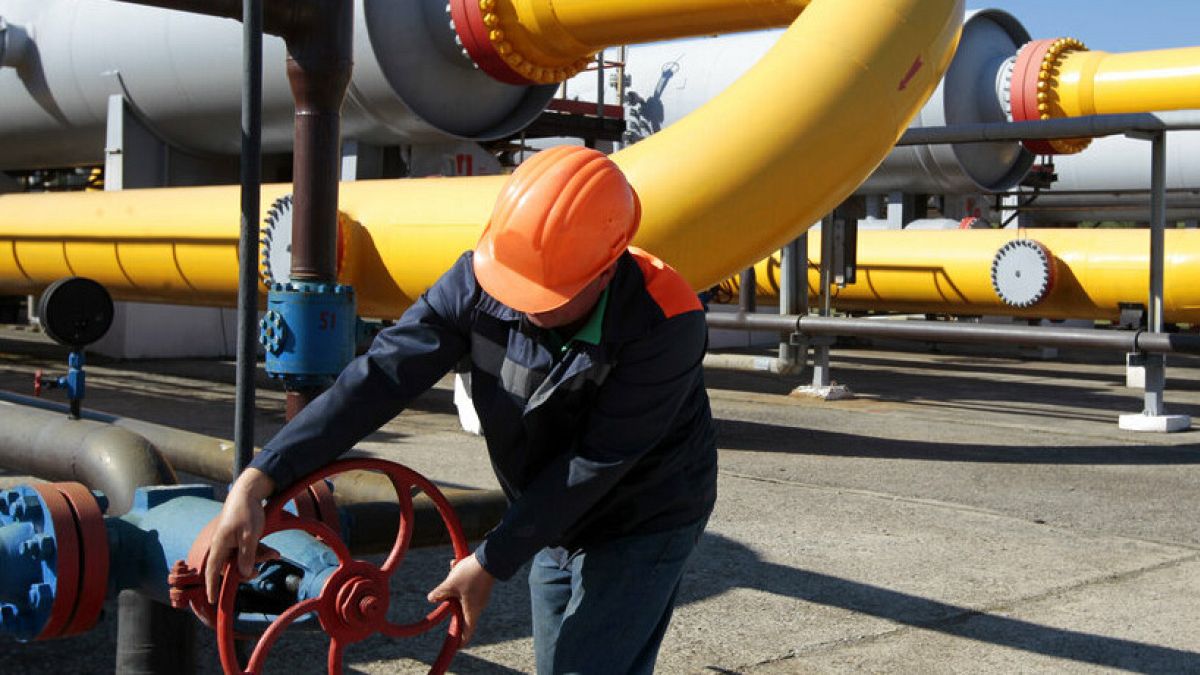Russia begins scaling-down gas supply to Europe via Ukraine as a five-year pre-war deal expires on New Year’s Day.
Russian gas supplies to European Union countries via Ukraine is set to end on the first day of 2025. Ukraine’s gas transit operator says Russia has not nominated any gas flows via Ukrainian pipelines for 1 January.
It marks the end of a five-year deal singed in 2019 between the two warring countries, that allowed Moscow’s exports of Liquified Natural Gas (LNG) to the continent to transit in Ukraine before being rerouted to its final destination.
The deal was highly lucrative, paying out billions to the Kremlin in revenues and to Kyiv in transit fees.
The decision came as Ukraine’s President Volodymyr Zelenskyy announced he had no plans of renewing the deal. He stressed that his decision is important to allow Europe to move on from Russia, and to not allow the Kremlin to “earn additional billions” on Ukrainian blood.
The shutdown of Russia’s oldest gas route to Europe ends a decade of turbulent relations with the continent, beginning in 2014 with the annexation of the Ukrainian Crimean Peninsula.
The EU has been intensifying its efforts to reduce its dependence on Russian energy since its invasion of Ukraine in February 2022. Figures released by Brussels indicate that Russian gas constituted about 8% of the bloc’s total gas imports in 2023. For contrast, that figure was at over 40% in 2021.
The bloc sought alternative energy sources in Qatar and the United States. The change was evidently efficient as Gazprom recorded a $7 billion (€6.73 billion) loss for the first time in two-and-a-half decades.
Despite Brussels significantly decreasing its imports of Russian gas, a number of eastern EU members states still largely depend on it.
Countries like Austria and Slovakia still import a massive amount of Russian gas, amounting to approximately €5 billion in revenues for Moscow.
Vienna says no supply disruptions are forecast as they had diversified sources, importing LNG via Italy and Germany, and built up a healthy reserve.
Slovakia has also been preparing, and reported no deficit, though Bratislava will now face an extra approximately €177 in transit fees in alternative routes, as gas will now be imported from the west rather than the east.
Other European countries, not members of the EU, are also expected to suffer. Moldova, once part of the Soviet Union, is projected to sustain serious losses.
Impacts of the deal’s expiry on Europe
Despite the bloc’s preparation and efforts to replace Russian gas, Europe has been feeling the impact, as energy costs soared, striking the continent’s industrial competitiveness in comparison to western competition in the United States, and eastern in China.
Many countries have experienced an economic slowdown, as inflation rates spiked, further worsening a cost of living crisis.
Ukraine is set to lose around €1 billion in annual transit fees, a drop in the bucket in comparison to the €5 billion Gazprom is projected to lose in revenues facilitated by that deal.
Plans for the future
The European Union’s executive body, the European Commission, released plans in December to help its member states and guide them through the journey of completely replacing Russian gas.
Brussels, in a report, laid out several contingencies to help affected countries. Some of the contingencies in place include filling needs through supplies of Greek, Turkish and Romanian gas via the Trans-Balkan route.
Norwegian gas is also an option which can be piped through Poland, while Germany can also assist in the distribution of gas through central Europe.
The plan is logistically difficult as it requires building work-arounds for systems that have been in place for decades.
Russia has for instance been transporting gas to Europe through Ukraine since 1991. At its peak, Moscow consolidated around 35% of the European gas market.
Additional sources • AP
Read the full article here


